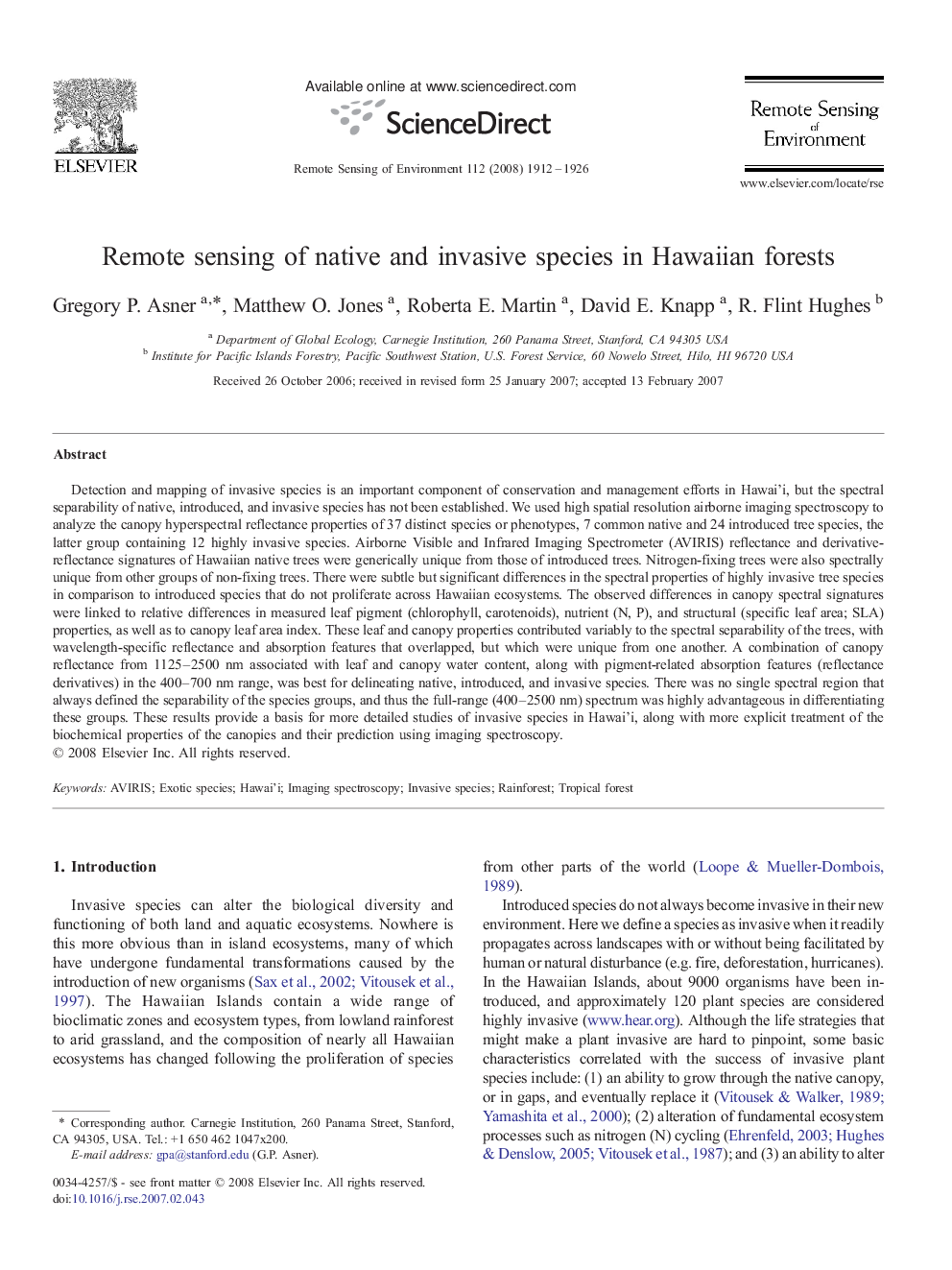| کد مقاله | کد نشریه | سال انتشار | مقاله انگلیسی | نسخه تمام متن |
|---|---|---|---|---|
| 4460571 | 1621329 | 2008 | 15 صفحه PDF | دانلود رایگان |

Detection and mapping of invasive species is an important component of conservation and management efforts in Hawai'i, but the spectral separability of native, introduced, and invasive species has not been established. We used high spatial resolution airborne imaging spectroscopy to analyze the canopy hyperspectral reflectance properties of 37 distinct species or phenotypes, 7 common native and 24 introduced tree species, the latter group containing 12 highly invasive species. Airborne Visible and Infrared Imaging Spectrometer (AVIRIS) reflectance and derivative-reflectance signatures of Hawaiian native trees were generically unique from those of introduced trees. Nitrogen-fixing trees were also spectrally unique from other groups of non-fixing trees. There were subtle but significant differences in the spectral properties of highly invasive tree species in comparison to introduced species that do not proliferate across Hawaiian ecosystems. The observed differences in canopy spectral signatures were linked to relative differences in measured leaf pigment (chlorophyll, carotenoids), nutrient (N, P), and structural (specific leaf area; SLA) properties, as well as to canopy leaf area index. These leaf and canopy properties contributed variably to the spectral separability of the trees, with wavelength-specific reflectance and absorption features that overlapped, but which were unique from one another. A combination of canopy reflectance from 1125–2500 nm associated with leaf and canopy water content, along with pigment-related absorption features (reflectance derivatives) in the 400–700 nm range, was best for delineating native, introduced, and invasive species. There was no single spectral region that always defined the separability of the species groups, and thus the full-range (400–2500 nm) spectrum was highly advantageous in differentiating these groups. These results provide a basis for more detailed studies of invasive species in Hawai'i, along with more explicit treatment of the biochemical properties of the canopies and their prediction using imaging spectroscopy.
Journal: Remote Sensing of Environment - Volume 112, Issue 5, 15 May 2008, Pages 1912–1926